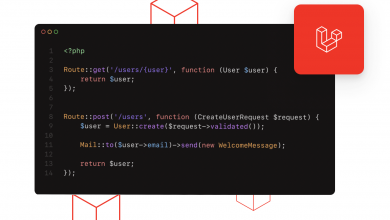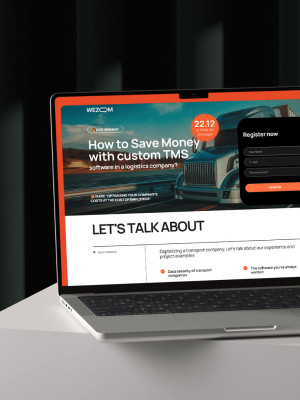The content of the article:
- Is it really that bad?
- Why the "whip method" doesn't really work
- Gamification is a new way of management
- Advantages of gamification in transportation
- How to gamify fleet management
Every owner of a carrier company can tell you a lot of stories about discipline problems among drivers. On the one hand, the logistics business requires compliance with bureaucracy, rules, standards, and regulations. On the other hand, drivers really appreciate the independence they have on the road, that is, they do not want to comply with these rules and regulations.
For large companies, disciplinary problems become very common – carriers usually “forget” to pass transport documentation and undergo technical inspection. This greatly harms the business, increases costs, and provokes additional risks. So, how to teach drivers to comply?
Is it really that bad?
It may seem that we are talking about particular management problems in some specific companies, but in our practice, we often hear the same thing from different market players: that it is very difficult to control the drivers’ work.
Carriers too often ignore the requirements of employers, they neglect safety and vehicle inspections, fail to check the Driver Vehicle Inspection Report (DVIR), drive with expired licenses and insurances, and also fail to take blood alcohol tests. Too often, drivers ignore the specific requirements of cargo transportation, do not comply with the temperature regime in refrigerators, send BOL and photos of the cargo condition to dispatchers with a delay, or do not send them at all.
Sometimes, when talking in an informal way, operators scold drivers very emotionally, not limiting themselves in terms. This position is understandable, as such negligence can cost the company a lot - both financially and reputationally.
The simplest example is: the driver forgot to go through MOT so that on the way his car broke down somewhere in the wilderness, and it had to be pulled by a tow truck. As a result, the company ruined a relationship with a customer and received a fine for late delivery. Besides that, a driver with inappropriate documentation can run into a fine during a surprise inspection or even trigger an accident, damage the cargo, and endanger the lives and health of other people. Such issues affect the rating of the carrier, which is also visible to all brokers. The more mistakes made – the fewer orders and profits the company receives.

In reality, the owner of a transport company has three ways to respond to a lack of discipline among drivers:
- accept the problem as an objective factor in transportation (just like bad weather or the inevitable wear and tear of professional equipment);
- use the “whip method” with strict control over carriers and punishments for “offenders”;
- use the "method of carrot" – that is, to motivate drivers to comply with the rules through additional stimuli.
The first method implies that the transport business will have to bear more and more costs due to the human factor. The second requires significant resources in management and does not always bring successful results. But the third approach is the most efficient, but it will require both courage and creativity.
Why the "whip method" doesn't really work
If team discipline is weak, the first impulse of many managers is to restore order with an iron fist. Still, this is not always possible among drivers who are located throughout the country and are used to relying on themselves. Tight control will draw on the company’s resources and the managers’ time. Also, the sanctions for misconduct do not directly prevent costs. If the staff needs to be punished for something, then the harm to the company has already been done.
Any carrier needs strong tools in order to control the work of drivers. But these tools must be proactive and work in real time.

So what can be used here? We have several cases of creating transport applications with a strong component of control. With the help of such products, transport companies force drivers to comply with rules, because otherwise, the run will not take place at all.
For example, in order to confirm a trip in the application, the carrier must conduct a Driver Vehicle Inspection Report (DVIR) in time, comply with safety requirements, and fix the documentation. This mechanism is somewhat similar to a pre-flight check before launching a spacecraft. We have implemented a similar system, for example, in GAMMA TMS. In its logic, the driver must load BOL upon his arrival at the stop, and the dispatcher must confirm this in order for the transfer to take place.
Our team implemented the equivalent logic in the transport application. There are "masks" – tools that oblige drivers to take pictures of trucks from different angles and enter the data necessary for dispatchers into the system. Without this, the transfer will not be started.

All this insures operators against unwanted risks and makes the work of drivers more transparent. But control does not solve all problems, as tough rules do not always work well in atypical situations, and drivers are still not motivated to comply with them.
Gamification is a new way of management
How to solve the problem of driver involvement in the regulations and standards of the company? While discussing this issue with one of our clients, we came up with the idea that the best way to solve the problem is to turn transportation into a game. After all, in fact, any game is an exciting solution to problems with many variables. Logistics, as a set of elaborate tasks, is perfectly suitable for gamification.
The very concept of gamification is now well-known among business analysts. It is called one of the main trends of Industry 4.0, and it solves a lot of problems connected to staff training and motivation. Our understanding of gamification refers to it as the introduction of proactive elements into business processes. These elements are familiar to any video games fan: they include a system of achievements, setting tasks in the form of quests, absolute visibility of the rules, and competitiveness. And of course, any game implies a reward for winning, including material prizes.

Based on these ideas, we implemented our first “gaming” transport TMS application, in which the rules and requirements are formulated in the most accessible form. Their observance and execution are awarded branded tokens, which is our equivalent of the game currency.
The admin panel of the application has a quest constructor where accountants, dispatchers, and lawyers can set tasks for drivers. It constitutes a time-limited “mission” that the driver must complete in order to receive prize tokens. Let’s say, “Wash your truck in the next three days while you stay in the parking lot,” or “Get your inspection done this week.” This logic made it possible to create a rating system for drivers, just as in competitive multiplayer games.
It is important that the prize tokens of the company are not just “wrappers”. The driver can exchange them for things that are quite material: for example, company branded merch, financial bonuses, extra days off, etc. And if you issue tokens like this on the blockchain, you can even create your own GameFi economy in the company.
Advantages of gamification in transportation

The gaming approach actually proved to be much better than the practice of strong control. Drivers would willingly “play by the rules” and receive bonuses for it, and the client would reduce costs and improve the service level. Why does it work? Here we can see a number of benefits of gamification:
- Growth of involvement. If the work is fun for the employees, then the problems of their motivation vanish. According to Anadea’s research, gaming activities at work increase staff motivation by 48%. And there are many such studies.
- It encourages healthy competition and proactivity. People naturally have excitement and the desire to surpass their neighbors. Competitive aspects help direct these qualities in a constructive direction.
- Accessibility and simplicity. The logistics industry is full of bureaucracy, which can sometimes confuse even experienced lawyers, not to mention drivers. But the quest mechanics allows you to make the regulations accessible and understandable.
- Stimulation of communication. Many games require well-coordinated teamwork, and this is exactly what is often lacking in the trucking industry. In the logic of gaming, drivers and dispatchers are required to constantly exchange data and receive instant feedback on their actions in order to achieve a result.
- Strengthening the HR brand. Almost all transport companies today suffer from an acute shortage of drivers, so the issue of finding and retaining them is important. It is better to earn the reputation of a company with a fresh and humane view of management than a reputation of a harsh employer who constantly punishes drivers with fines.
How to gamify fleet management
This is a very complex task, the solution of which will require thoughtful and high-quality business analysis, creativity, and the use of advanced IT technology. But for an experienced and skilled team, everything is possible.
Gamification today represents an almost limitless creative space for experiments in management. Which approach would you take? Maybe arrange a “royal battle” among drivers in the field of compliance with document flow standards? Or launch an AR quest so that carriers do not forget to check the condition of the cargo?
If you have any ideas – do not put them off “for the future”, better discuss them with us! WEZOM specialists will be happy to share their experience with you, demonstrate our cases, or answer complex questions.

